Single-cell analysis reveals fibroblast heterogeneity and myeloid-derived adipocyte progenitors in murine skin wounds
February 2019
in “Nature Communications”
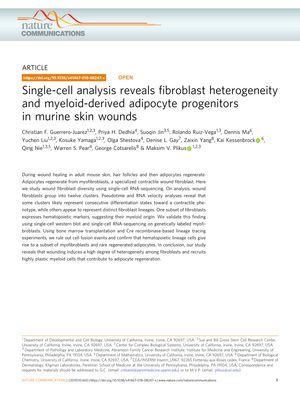
TLDR The research found that different types of fibroblasts are involved in wound healing and that some blood cells can turn into fat cells during this process.
The study used single-cell RNA sequencing to explore the diversity of fibroblasts in murine skin wounds, identifying 12 distinct fibroblast clusters and revealing significant heterogeneity. It was found that fibroblasts differentiate into myofibroblasts, which are key for fat regeneration, and that myeloid cells can convert into fibroblasts and potentially into myofibroblasts during wound repair. Bone marrow transplantation experiments confirmed that hematopoietic lineage cells can differentiate into myofibroblasts and adipocytes in the wound dermis. The study included a total of 116 genetically marked contractile cells isolated from day 12 wounds for scRNA-seq, and in bone marrow transplantation mice, about 30% of cells at 28 days post-wounding and 2 months post-wounding were from the hematopoietic lineage. Additionally, the study found that hematopoietic lineage cells can contribute to fat cell populations in wound healing, with occasional lacZ-positive de novo adipocytes observed in the hair-bearing wounds of Retn-lacZ HSCs BMT mice (n=72 animals). The findings suggest that hematopoietic cells can directly convert to adipocytes without cell fusion and that myeloid progenitors mediate this process during wound healing.
View this study on nature.com →
Cited in this study

research Msx2 Supports Epidermal Competency During Wound-Induced Hair Follicle Neogenesis
The gene Msx2 is crucial for hair follicle regeneration during wound healing.
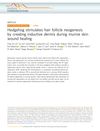
research Hedgehog stimulates hair follicle neogenesis by creating inductive dermis during murine skin wound healing
The Sonic hedgehog pathway is crucial for new hair growth during mouse skin healing.
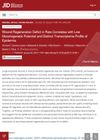
research Wound Regeneration Deficit in Rats Correlates with Low Morphogenetic Potential and Distinct Transcriptome Profile of Epidermis
Rats can't grow new hair follicles after skin wounds, unlike mice, due to differences in gene expression and response to WNT signaling.
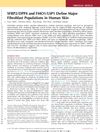
research SFRP2/DPP4 and FMO1/LSP1 Define Major Fibroblast Populations in Human Skin
Two main types of fibroblasts with unique functions and additional subtypes were identified in human skin.
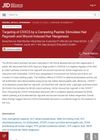
research Targeting of CXXC5 by a Competing Peptide Stimulates Hair Regrowth and Wound-Induced Hair Neogenesis
Blocking a protein called CXXC5 with a specific peptide can stimulate hair regrowth and new hair growth in wounds.
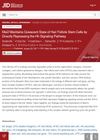
research Msi2 Maintains Quiescent State of Hair Follicle Stem Cells by Directly Repressing the Hh Signaling Pathway
The Msi2 protein helps keep hair follicle stem cells inactive, controlling hair growth and regeneration.
research Epithelial-Mesenchymal Micro-niches Govern Stem Cell Lineage Choices
Different small areas within hair follicles send specific signals that control what type of cells stem cells become.

research Macrophages induce AKT/β-catenin-dependent Lgr5+ stem cell activation and hair follicle regeneration through TNF
Macrophages help regrow hair by activating stem cells using AKT/β-catenin and TNF.
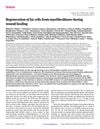
research Regeneration of fat cells from myofibroblasts during wound healing
Some wound-healing cells can turn into fat cells around new hair growth in mice.
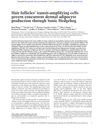
research Hair follicles’ transit-amplifying cells govern concurrent dermal adipocyte production through Sonic Hedgehog
Cells in hair follicles help create fat cells in the skin by releasing a protein called Sonic Hedgehog.
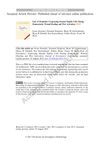
research Fate of Prominin-1 Expressing Dermal Papilla Cells during Homeostasis, Wound Healing and Wnt Activation
Prominin-1 expressing cells in the dermal papilla help regulate hair follicle size and communication but don't aid in skin repair.
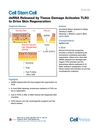
research dsRNA Released by Tissue Damage Activates TLR3 to Drive Skin Regeneration
Damage to skin releases dsRNA, which activates TLR3 and helps in skin and hair follicle regeneration.
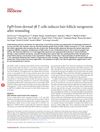
research Fgf9 from dermal γδ T cells induces hair follicle neogenesis after wounding
A protein from certain immune cells is key for new hair growth after skin injury in mice.
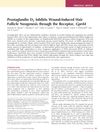
research Prostaglandin D2 Inhibits Wound-Induced Hair Follicle Neogenesis through the Receptor, Gpr44
Prostaglandin D2 blocks new hair growth after skin injury through the Gpr44 receptor.
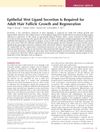
research Epithelial Wnt Ligand Secretion Is Required for Adult Hair Follicle Growth and Regeneration
Wnt ligands are crucial for hair growth and repair.
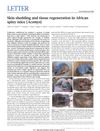
research Skin shedding and tissue regeneration in African spiny mice (Acomys)
African spiny mice can regenerate skin, hair, and cartilage, but not muscle, and their unique abilities could be useful for regenerative medicine.

research Adipocyte Lineage Cells Contribute to the Skin Stem Cell Niche to Drive Hair Cycling
Fat-related cells are important for initiating hair growth.

research Wnt-dependent de novo hair follicle regeneration in adult mouse skin after wounding
Hair follicles can regrow in wounded adult mouse skin using a process like embryo development.
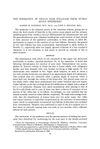
research The Formation of Vellus Hair Follicles from Human Adult Epidermis1
Adult human skin can grow new fine hair follicles after a deep exfoliation treatment.